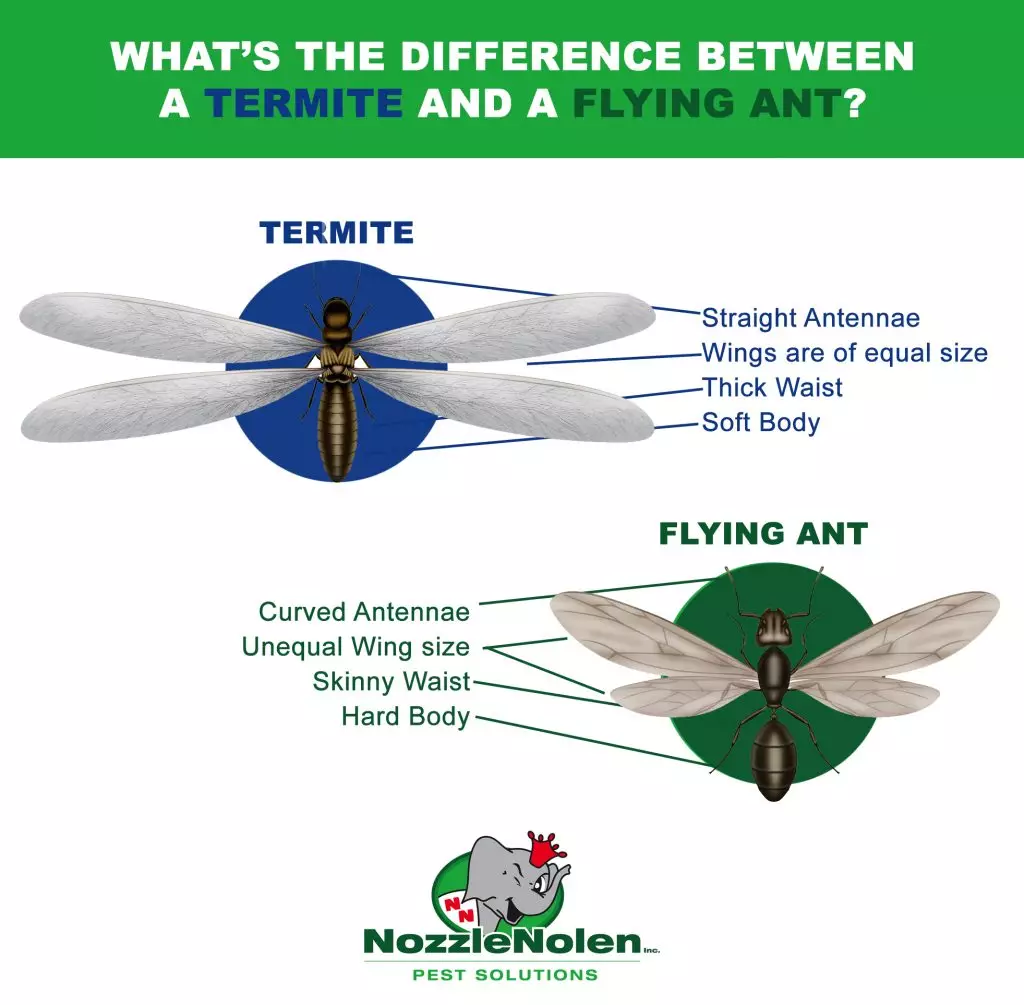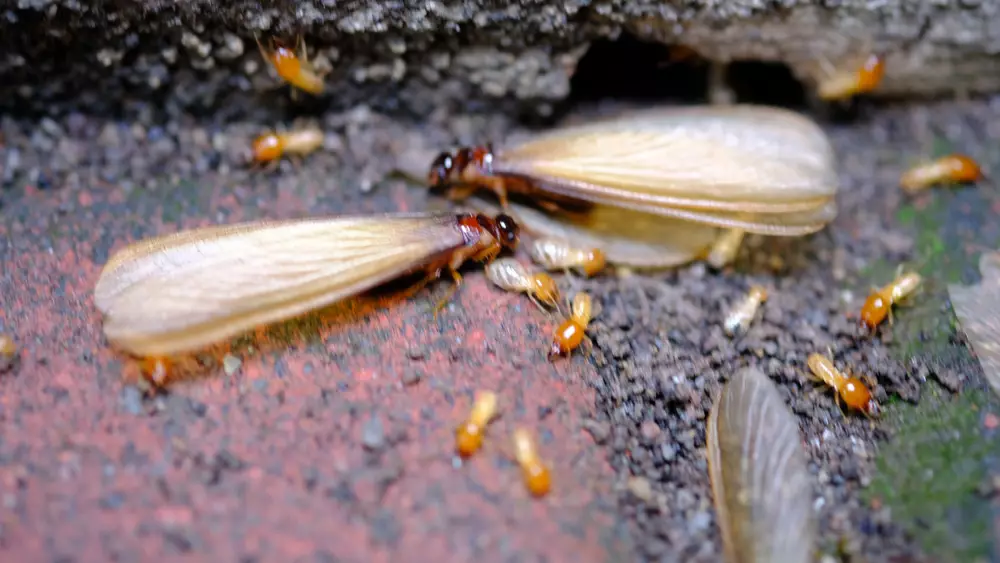As a Florida homeowner, you’ve probably dealt with your fair share of ants, termites, or other pest issues. But when it comes to winged insects, it can be tricky to tell the difference between flying ants and flying termites. While they may look similar at first glance, knowing which pest you’re dealing with is crucial for effective treatment and preventing damage to your home. In this post, we’ll break down the key differences between these two pests to equip you for future encounters.
Why do some ants and termites have wings?
One important note is that flying ants and termites are not specific species of insects. Different species can have winged versions. Ants and termites are usually wingless, but they will start growing wings when it’s time to swarm (ie, mate and establish new colonies).
Learn more about termite swarming season here.
Flying Ants vs Flying Termites: Size and Appearance
Both flying ants and flying termites are relatively small, typically measuring between 1/4 to 3/8 of an inch long. However, there are some key physical differences to help tell them apart.
- Body Shape: Flying ants have distinctly segmented bodies with a thin, pinched waist between their thorax and abdomen. Termites have a more uniform, straight-sided body without a visible waist.
- Wings: Both pests have two pairs of wings, but termite wings are equal in size and length, extending well past the abdomen of their body. Termite wings are clear with a vein pattern. Flying ant wings are unequal, with the front pair being noticeably larger than the hind pair. They are usually brownish and slightly opaque in color with no recognizable pattern.
- Antennae: Termite antennae are straight and beaded while flying ants have elbowed antennae with a distinct bend.
- Color: Flying ants can vary in color from black to reddish-brown, while termite swarmers are typically dark brown or black.



Flying Ants vs Flying Termites: Behavior and Habits
Another way to differentiate between flying ants and termites is by their behavior and the timing of their swarms.
- Swarm Timing: Though it varies by species, termite swarmers typically emerge in the spring, usually on a warm or humid day after rainfall. On the other hand, flying ants can swarm year-round in Florida thanks to our warm and humid climate, though the prime time is late spring/early summer.
- Common Locations: Termites are attracted to light and are often found near windows, doors, or light fixtures. If you see them outside, that may indicate a nest somewhere in your yard or on the outside of the foundation. Swarming ants are less attracted to light and may be found congregating around food sources or nesting sites. They can also be found in outdoor areas near pools, moist wood, or your garden.
- Food: Termites mainly consume wood, paper, and other cellulose-based objects including grass, cotton, plants, or books. Ants will feed on seeds, tree nectar, and any food scraps they can find around your home.
- Discarded Wings: After swarming and mating, termites shed their wings, leaving piles of discarded wings behind as a telltale sign of an infestation. Termites tend to discard their wings at a higher rate than ants, so if you see a significant number of discarded wings in your home, it’s more likely to be a sign of a termite infestation rather than flying ants.
Flying Ants vs Flying Termites: Dangers and Damage
Flying ants and termites are a nuisance, but termites pose a much more serious threat to your home. Termite swarmers themselves do not cause damage, but they are a sign of a mature colony nearby. Depending on the species, termites will set up a colony and start eating wood in your foundations, walls, crawl spaces, basement, and even your furniture or books.
Flying ants, specifically carpenter ants, can also damage wood by excavating tunnels for their nest. However, the extent of damage is typically less severe than that caused by termites. Flying ants are generally not aggressive and will only bite if handled or threatened.
How long do flying ants and termites live?
- Flying Ants: Male flying ants (called drones) have a very short lifespan of only about 2 weeks. Their sole purpose is to mate with the queen, and afterward, they die! (Sorry, dudes.) The queen flying ants can live much longer–sometimes up to 15 years! The female worker ants can typically live up to 7 years.
- Flying Termites: Worker and soldier termites only live for approximately 1-2 years, while the reproductive (flying) termites can live for nearly 4 years. However, the kings and queens can keep going for decades, with some queens surviving up to 20-30 years!
Flying Ants vs Flying Termites: Treatment and Prevention
If you suspect a flying pest problem, contact a professional pest control company for help, as this is a sign that you already have an established colony that will be more tricky to remove. DIY methods are rarely effective against established infestations.
For flying ants, treatment may involve locating and directly treating the nest, sealing entry points, and eliminating sources of moisture and food debris. Preventive measures include keeping kitchen areas clean, storing food properly, and trimming back vegetation from the home’s exterior.
Termite treatment often requires specialized techniques such as liquid treatments, baits, or fumigation, depending on the species and severity of the infestation. Regular inspections, reducing moisture, and maintaining a termite-resistant barrier around the home can help prevent future infestations.
At Nozzle Nolen, our experienced technicians are trained to identify and effectively treat both ant and termite problems. With over 70 years of experience serving South Florida, we understand the unique challenges these pests pose and are committed to protecting your home with eco-friendly and customized solutions.




